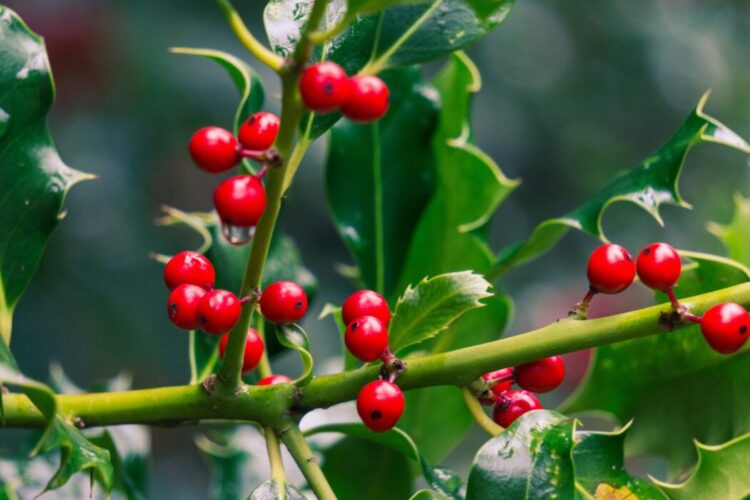Deck the halls with boughs of holly, falalalalala…
Holly (Ilex aquifolium) is my plant of the month for December. When many other native trees and shrubs have dropped their leaves and gone to sleep for the winter, the glossy leaves remain on evergreen holly. Pollinated females produce bright red berries which adds a splash of colour to what can otherwise be quite a grey and gloomy time of year. It’s also fantastic for wildlife, providing shelter and a source of food to invertebrates, birds, and small mammals.
Folklore
Holly is strongly associated with Christmas, cuttings and sprigs have been used for centuries as decorations for the festive season, but it once had a different purpose. It was believed that holly’s ability to keep its leaves throughout the year gave it special powers, and that the spiny margins symbolised protection. It would be brought into the home to keep mischievous fairies out, and if planted outside would protect against evil, keeping at bay the devil, witches and ghosts!
Specifications
Holly grows in most situations and isn’t fussy about soil type, it makes a great hedge or can be grown as a specimen tree, either way adding interest and improving privacy. Common holly slowly grows up to an ultimate height and spread of 12m x 8m, but there’s loads of cultivars to choose from with varying colours and sizes. Ilex aquifolium ‘J.C. van Tol’ is a great choice for smaller gardens, growing up to 6m x 4m – half the size of common holly. It’s leaves are almost smooth and it’s self fertile so those beautiful berries are guaranteed.

Feature image credit: Trevor Vannoy, Unsplash



